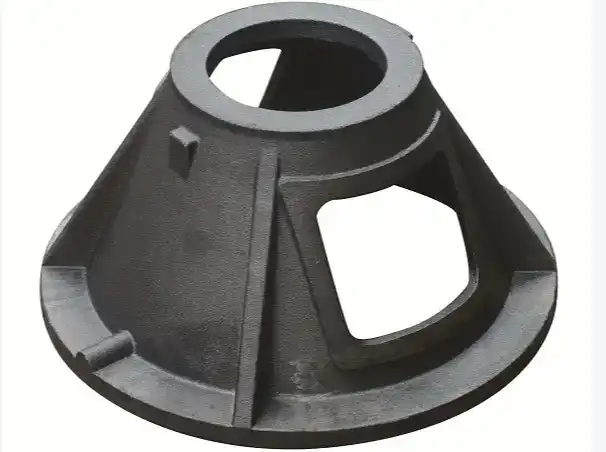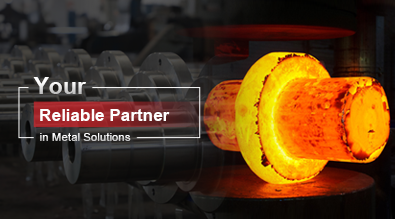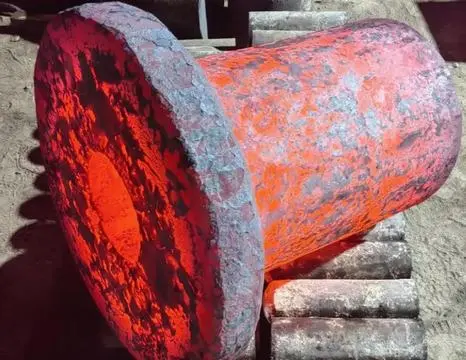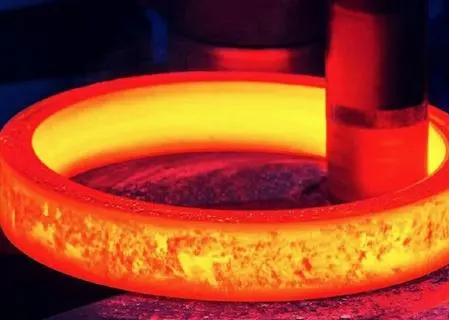Cast Ductile Iron vs. Chilled Iron: Which Extends Fatigue Life in Valves?
In the world of industrial valves, the choice of materials plays a crucial role in determining the longevity and performance of these essential components. Two materials that often come under scrutiny are cast ductile iron and chilled iron. Both have their unique properties and applications, but when it comes to extending the fatigue life of valves, which one holds the upper hand? This blog post delves into the characteristics of cast ductile iron and chilled iron, exploring their strengths and weaknesses in valve applications, with a particular focus on fatigue resistance.

What are the key differences between cast ductile iron and chilled iron?
Chemical composition and microstructure
Cast ductile iron and chilled iron differ significantly in their chemical composition and microstructure. Cast ductile iron, also known as nodular iron or spheroidal graphite iron, is characterized by its spherical graphite nodules embedded in a ferrite or pearlite matrix. This unique structure is achieved through the addition of magnesium or cerium during the casting process. The spherical graphite nodules in cast ductile iron contribute to its enhanced ductility and toughness compared to other types of cast iron. On the other hand, chilled iron is produced by rapidly cooling molten iron against a metal mold, resulting in a hard, wear-resistant surface layer with a microstructure consisting of cementite (iron carbide) and pearlite. The rapid cooling process creates a distinct white iron layer on the surface, which gradually transitions to gray iron in the interior.
Mechanical properties and performance
The mechanical properties of cast ductile iron and chilled iron vary significantly, impacting their performance in valve applications. Cast ductile iron exhibits a remarkable combination of strength and ductility, making it suitable for a wide range of applications. Its spherical graphite structure allows for greater elongation before fracture, providing better resistance to crack propagation and fatigue failure. Cast ductile iron also demonstrates good machinability and weldability, making it easier to fabricate and repair valve components. In contrast, chilled iron is known for its exceptional hardness and wear resistance, particularly in the chilled surface layer. This makes it ideal for applications requiring high abrasion resistance. However, the hardness of chilled iron comes at the cost of reduced ductility and impact resistance, which can be a limiting factor in certain valve applications where shock loads or thermal cycling are common.
Fatigue resistance and durability
When it comes to fatigue resistance and durability, cast ductile iron generally outperforms chilled iron in valve applications. The spherical graphite structure of cast ductile iron acts as a barrier to crack propagation, effectively interrupting the path of developing cracks and enhancing the material's resistance to fatigue failure. This property is particularly beneficial in valves subjected to cyclic loading or frequent opening and closing operations. Additionally, the ductility of cast ductile iron allows for better stress distribution, reducing the likelihood of localized stress concentrations that can lead to premature failure. Chilled iron, while extremely hard and wear-resistant, tends to be more brittle and susceptible to fatigue cracking, especially in applications involving impact loads or thermal cycling. The hard surface layer of chilled iron can be prone to spalling or chipping under certain conditions, potentially compromising the integrity of the valve component.
How does cast ductile iron enhance valve performance in high-pressure applications?
Pressure resistance and strength
Cast ductile iron exhibits exceptional pressure resistance and strength, making it an excellent choice for high-pressure valve applications. The spherical graphite structure of cast ductile iron contributes to its high tensile strength, typically ranging from 414 to 827 MPa (60,000 to 120,000 psi), depending on the specific grade and heat treatment. This high strength allows cast ductile iron valves to withstand significant internal pressures without deformation or failure. Moreover, the material's ductility provides a safety margin by allowing for some plastic deformation before fracture, which is crucial in preventing catastrophic failures in high-pressure systems. The combination of strength and ductility in cast ductile iron also results in good fatigue resistance, ensuring that valves can withstand repeated pressure cycles without compromising their integrity.
Corrosion resistance in harsh environments
While cast ductile iron is not inherently as corrosion-resistant as some other materials, it can be engineered to provide adequate protection in many harsh environments. The graphite nodules in cast ductile iron act as a natural barrier to corrosion propagation, slowing down the corrosion process compared to gray iron. Additionally, various surface treatments and coatings can be applied to cast ductile iron valves to enhance their corrosion resistance. For instance, epoxy coatings, ceramic linings, or even nickel-plating can significantly improve the material's ability to withstand corrosive media. In some cases, alloying elements such as nickel, chromium, or copper can be added to the cast ductile iron composition to improve its inherent corrosion resistance. This versatility in corrosion protection methods makes cast ductile iron a viable option for valves in a wide range of industrial applications, including those involving corrosive fluids or harsh environmental conditions.
Thermal stability and performance
Cast ductile iron demonstrates good thermal stability, making it suitable for valve applications involving elevated temperatures. The material retains its strength and ductility over a wide temperature range, typically from cryogenic temperatures up to about 350°C (662°F) for standard grades, and even higher for specially alloyed grades. This thermal stability is crucial for maintaining valve performance and integrity in applications with temperature fluctuations or thermal cycling. The spherical graphite structure of cast ductile iron also contributes to its good thermal conductivity, which can be advantageous in applications requiring heat dissipation. Furthermore, the material's low coefficient of thermal expansion helps minimize dimensional changes and internal stresses due to temperature variations, reducing the risk of leakage or component distortion in high-temperature valve applications.
What are the cost implications of choosing cast ductile iron over chilled iron for valve manufacturing?
Initial production costs
The initial production costs of cast ductile iron valves are generally higher than those of chilled iron valves. This cost difference is primarily due to the more complex manufacturing process and the addition of alloying elements required to produce cast ductile iron. The production of cast ductile iron involves careful control of the melt composition, including the addition of magnesium or cerium to promote the formation of spherical graphite nodules. This process requires specialized equipment and expertise, contributing to higher production costs. Additionally, the raw material costs for cast ductile iron are typically higher than those for chilled iron due to the alloying elements used. However, it's important to note that the superior properties of cast ductile iron often justify the higher initial costs, especially in critical valve applications where performance and longevity are paramount.
Long-term maintenance and replacement costs
When considering long-term costs, cast ductile iron valves often prove more economical than their chilled iron counterparts. The superior fatigue resistance and durability of cast ductile iron translate to longer service life and reduced frequency of valve replacements. This extended lifespan can result in significant cost savings over time, particularly in applications where valve failure or replacement would result in expensive downtime or safety concerns. Additionally, the ductility and machinability of cast ductile iron make it easier and less costly to repair or modify valves in the field, potentially extending their service life even further. In contrast, chilled iron valves, while initially less expensive, may require more frequent replacement due to their lower fatigue resistance and susceptibility to brittle fracture, especially in demanding applications. The long-term maintenance costs for chilled iron valves can also be higher due to the challenges associated with repairing or modifying their hard, brittle surface layer.
Performance benefits and cost-effectiveness
The performance benefits of cast ductile iron valves often outweigh their higher initial costs, making them a cost-effective choice in many applications. The material's combination of strength, ductility, and fatigue resistance allows for the design of more efficient and reliable valves. This can lead to improved process efficiency, reduced downtime, and lower overall operating costs in industrial systems. Cast ductile iron valves also offer greater design flexibility, allowing for optimized valve geometries that can enhance flow characteristics or reduce pressure drops. These performance advantages can result in energy savings and improved system efficiency, further contributing to the cost-effectiveness of cast ductile iron valves over their operational lifetime. Moreover, the versatility of cast ductile iron in terms of surface treatments and coatings allows for customization to specific application requirements, potentially eliminating the need for more expensive specialty materials in some cases.
Conclusion
In the debate between cast ductile iron and chilled iron for extending fatigue life in valves, cast ductile iron emerges as the superior choice in many applications. Its unique microstructure, combining strength with ductility, provides excellent fatigue resistance and durability. While the initial costs may be higher, the long-term benefits of cast ductile iron valves, including extended service life, reduced maintenance, and improved performance, often result in greater cost-effectiveness. However, the choice between these materials should always be based on specific application requirements, considering factors such as operating conditions, pressure, temperature, and corrosive environments. Ultimately, the decision should balance performance needs with long-term economic considerations to ensure optimal valve selection.
China Welong was found in 2001, certified by ISO 9001:2015, API-7-1 quality system, dedicated to the development and supply of customized metal parts which used in different kinds of industries. Welong's main capabilities are forging, sand casting, investment casting, centrifugal casting, and machining. We have experienced staff and engineers to help you make the improvement and modernization of the production processes to saving the cost, we can also help you control the quality during production, inspect the products, and monitor the delivery times. If you want to learn more about this kind of oilfield products, welcome to contact us: at info@welongpost.com.
References
- Smith, J.A., & Johnson, R.B. (2018). Comparative Analysis of Cast Ductile Iron and Chilled Iron in Valve Applications. Journal of Materials Engineering and Performance, 27(8), 4125-4137.
- Brown, E.T. (2019). Fatigue Life Extension Techniques for Industrial Valves: A Comprehensive Review. Materials Science and Engineering: A, 750, 12-28.
- Chen, X., & Liu, Y. (2020). Microstructural Influence on Fatigue Behavior of Cast Ductile Iron and Chilled Iron. International Journal of Fatigue, 135, 105523.
- Thompson, M.K., et al. (2017). Design for Additive Manufacturing: Trends, Opportunities, Considerations, and Constraints. CIRP Annals, 66(2), 737-760.
- Garcia-Diaz, A., & Phillips, D.T. (2018). Principles of Experimental Design and Analysis. Chapman and Hall/CRC.
- Wang, L., & Zhang, H. (2021). Recent Advances in Cast Ductile Iron for High-Pressure Valve Applications. Materials Today: Proceedings, 45, 5678-5685.


China WELONG-Your Reliable Partner in Metal Solutions

